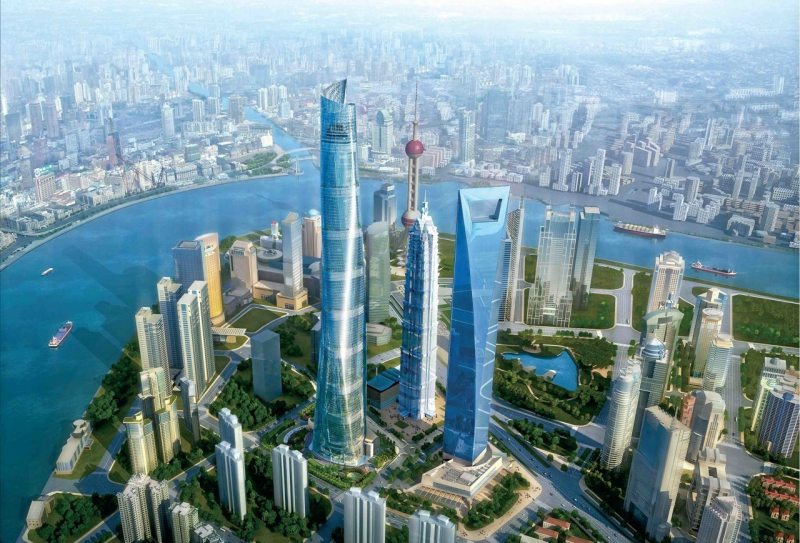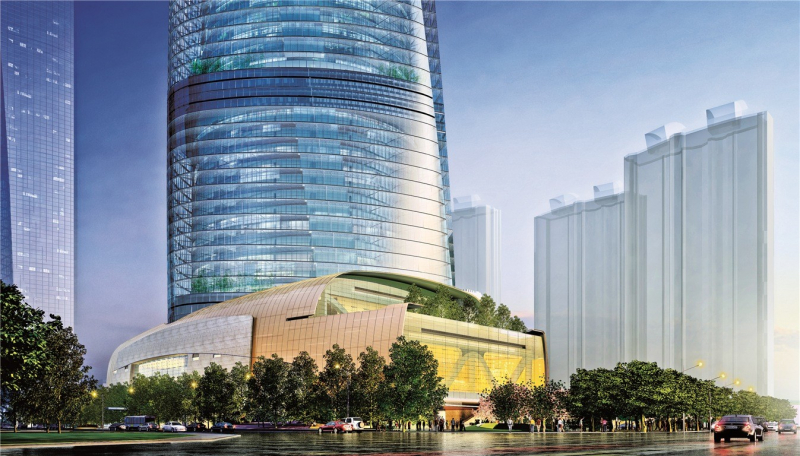Shanghai Tower – China

The Shanghai Tower, designed by Gensler, has reached a height of 632 meters, making it China's and the world's tallest building (2,074 feet). The spiraling megastructure, set to open in 2014, will complete a trio of towers - including the adjacent Jin Mao Tower and Shanghai World Financial Center - that will serve as the centerpiece of the city's Lujiazui commercial district, which has grown from farmland to become one of Asia's leading financial centers in just over 20 years.
The cutting-edge tower will house Class-A office and retail space, as well as a premium hotel and cultural venues, and will be marked by a series of magnificent sky gardens.
The Shanghai Tower is comprised of nine cylindrical towers stacked on top of one another. The inner layer of the double-skin façade encloses the stacked buildings, while the outer layer forms the building envelope, which rotates 120 degrees as it rises, giving Shanghai Tower its distinctive curving shape. The niches between the two façade layers create nine atrium sky gardens. The public sky atria within Shanghai Tower provide spaces for interaction and community gathering, akin to plazas and civic squares in traditional cities, with restaurants, cafés, coffee shops, and convenience stores, as well as lush landscaping. The façade of the Shanghai Tower is surrounded by public spaces, including sky gardens.
The Shanghai Tower's interior and exterior skins are both translucent, creating a visual link between the tower's interiors and Shanghai's urban fabric. The physical and visual links between the tower and the city are maintained by retail and event areas on the ground level, as well as many entrances and a metro station beneath the structure.
Shanghai Structure will include the world's fastest elevators, with Mitsubishi-designed double-height cabs delivering residents and visitors skyward at 40 mph using novel technologies developed specifically for the tower.
Shanghai Tower was designed with the environment in consideration. The façade's taper, roughness, and asymmetry combine to reduce wind loads on the structure by 24%, saving $58 million in total building materials. The structure's transparent inner and outer skins let in as much natural light as possible, reducing the need for electric illumination. The tower's exterior covering also insulates it, reducing energy usage for heating and cooling. The spiraling parapet of the tower collects rainwater, which is used for the tower's heating and air conditioning systems.
The building's top floors are powered by wind turbines beneath the parapet, while the lower floors are heated and powered by a 2,130kW natural gas-fired cogeneration system. Greenspace will make up a third of the land, with plants that will help keep it cool. The sustainable measures implemented by the Shanghai Skyscraper will reduce the building's carbon footprint by 34,000 metric tons per year, and the skyscraper is striving for LEED Gold certification from the US Green Building Council as well as a China Green Building Three Star rating.
Location: Shanghai
Height: 2,073 ft (632 m)
Floors: 128
Architects: Gensler
Building Function: Hotel, Offices
Completion: 2015











